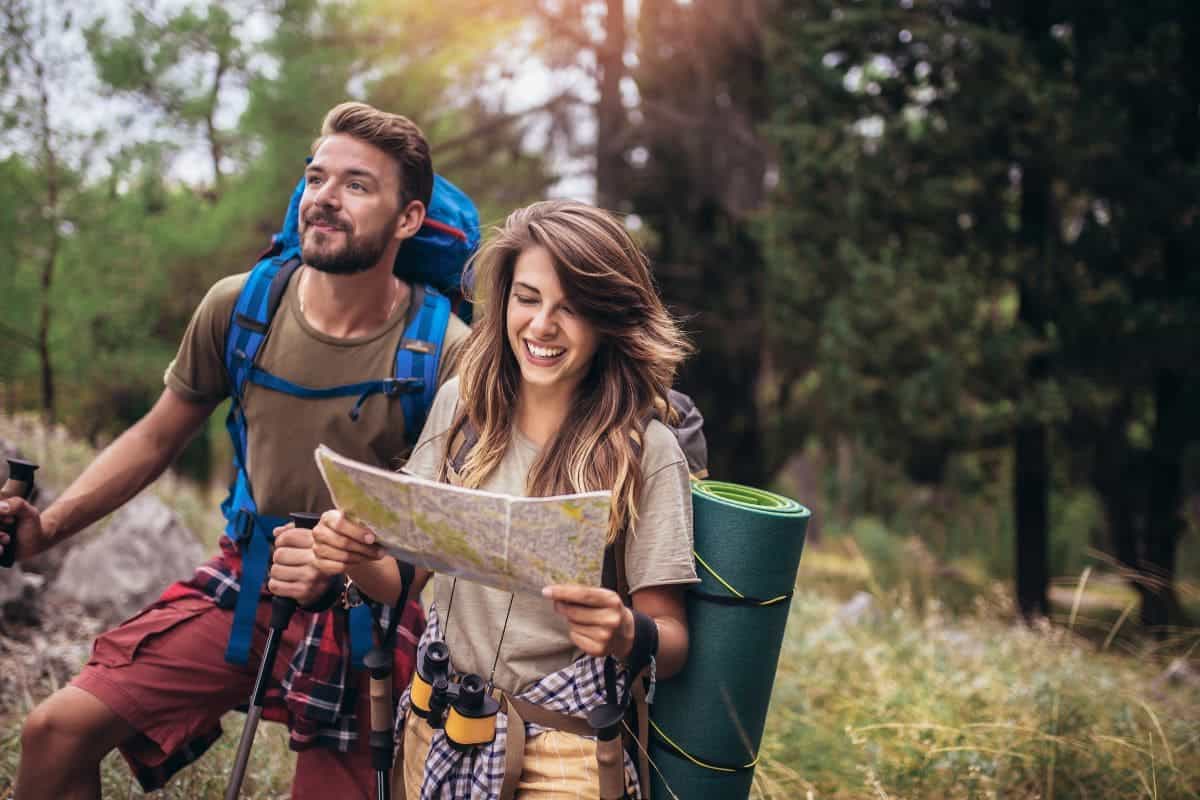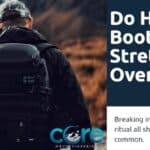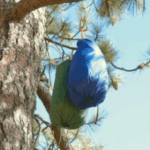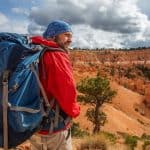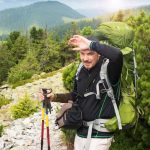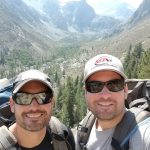California has some of the most beautiful landscapes for backpackers to explore. Just about anywhere you choose to hike, you’re going to have a wonderful time, as long as you have a backpacking plan.
You’ll need to pick trails that match your fitness and experience level. If you’re just starting, you want your adventure to be fun and just the right amount of challenging. If not, you might find yourself in a bit of trouble. So, you might as well avoid any of that in our beginner backpacking trips in California guide!
Key Takeaways
- Successful backpacking starts with the right plan and equipment.
- Beginners should pick trails based on their difficulty level, starting with easy trails.
- Hiking beginners should plan their trips with safety in mind.
Top Beginner-Friendly Destinations

California is a haven for backpackers, with trails that cater to both the experienced and the novice. It really is perfect for everyone.
For those just starting, some spots are not simply beautiful, they’re also kind to your beginner’s legs and sense of adventure.
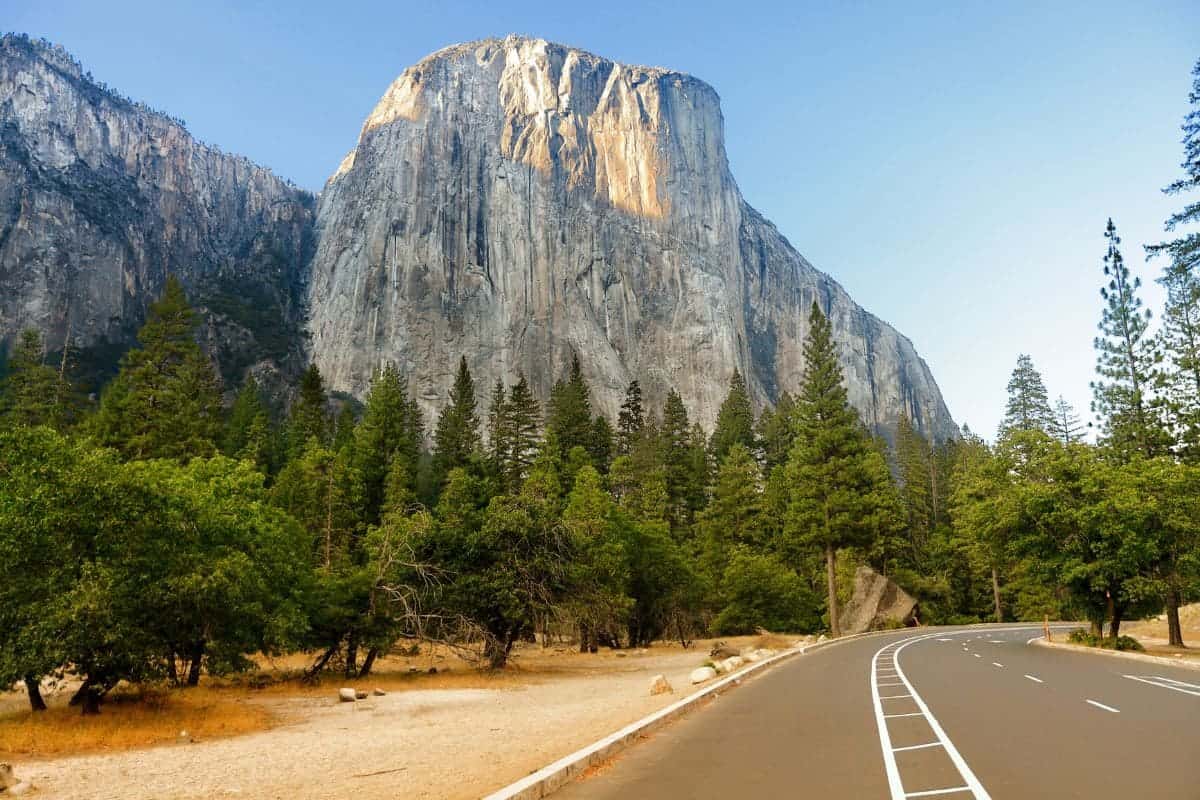
1. Yosemite Mountain Trail
Your trip to Yosemite National Park isn’t complete without soaking in the views of Half Dome and walking through Little Yosemite Valley.
A great start is the hike from Tuolumne Meadows to Glen Aulin Camp, a manageable 12.6 miles out-and-back trail with about 750 feet in elevation change.
Plan a 2-3 day trip and enjoy the waterfalls and meadows without overdoing it!
2. Point Reyes National Seashore
Point Reyes offers a softer side of wilderness along the California coast. You can find trails that meander through forests, skirt coastal cliffs, and lead to secluded beaches. The landscape is diverse, and the hikes are more forgiving, which means you can enjoy the scenery without gasping for breath.
Check out the Bear Valley Trail for a gentle introduction; you’ll get a bit of everything Point Reyes is famous for.
3. Big Sur’s Panoramic Hikes
Big Sur’s coastline offers trails with dramatic ocean views that are accessible to beginners. I remember the first time I was up there. It really is one of the best areas I’ve ever been to.
Don’t miss the opportunity to hike the paths leading to Pfeiffer Beach, which is famous for its keyhole rock formation and purple sand.
Beginning trails in Big Sur give you a taste of the Pacific’s grandeur, with cliffs plunging into the sea, without the need for technical climbing or advanced backcountry skills.
Understanding Backpacking Permits in California

We’re going to start with permits because this might be an area that messes you up if you’re coming from out of state.
Think of a permit is your ticket to a regulated adventure, ensuring that wilderness areas aren’t overrun and remain pristine for everyone. Well, that’s the story they sell us anyways.
For most backpacking trips in California, you’ll need a permit to spend the night in the backcountry.
Some popular spots may have additional requirements, like the Half Dome Permit in Yosemite, which is separate from the general backpacking permit.
How to Obtain an Adventure Permit in California
To get your hands on a permit, you’ll typically browse the respective park’s website or visit their ranger stations. In some cases, you can snag a permit online or over the phone. Here’s a quick run-down:
- Check the specific park’s website for availability and procedure
- Apply online, if available, or contact the ranger station
Depending on the area, permits might be up for grabs through a lottery system, especially for sought-after places like Yosemite. So, make sure to plan and apply early, as spots fill up fast!
Yosemite Permit System
For a backpacking trip in Yosemite National Park, it’s a bit more intricate due to its popularity. Even poeple outside of the US know what Yosemite is.
Here’s what you need to know specifically for Yosemite:
| Time of Year | Quota Status |
|---|---|
| April 26 – October 20 | Quotas in effect |
| Outside these dates | No quota, but permits still required |
- Half Dome: If you’re dreaming of adding Half Dome to your wish list, you’ll need to secure an additional permit specifically for the cables on the dome.
- Getting the Permit: Yosemite’s permits become available 168 days in advance via a lottery held on Recreation.gov. Once the initial lottery has passed, any remaining permits are available on a first-come, first-served basis.
CoreM Pro-Tip: Be aware that Yosemite uses a daily quota system for trailhead departures to manage crowds. So make sure to plan and secure your spot early to enjoy your hike!
Finding Your First Trail
Trail Difficulty Ratings
Generally, trails are ranked as easy, moderate, or difficult. It’s exactly how it sounds. For beginners, stick to easy-to-moderate trails, as they usually have less elevation gain and smoother terrain.
Look for trails with well-marked paths and less technical challenges.
Low-Mileage Trails
Start with a trail that is manageable in terms of distance. Low-mileage trails, typically ranging from 3 to 7 miles, let you acclimate to backpacking without overexerting yourself. Additionally, shorter trails often have the advantage of more frequent campsites and water sources.
This isn’t only for you, it’s a good starting point if you have a few people in your party that are just starting to hike.
Examples of Low-Mileage Trails:
- Five Lakes Trail – Around 5 miles round trip
- Sword Lake – Approximately 5.6 miles round trip
Popular Beginner Trails in California
Besides the distance and difficulty, it’s smart to choose a popular trail well-suited for beginners. These trails are usually well-maintained and offer breathtaking scenery to make your effort worth it. The trails are also clearly marked, so it’s easy to follow where you should go.
Yosemite Valley, for instance, is renowned for its beauty and has options conducive to a novice backpacker’s first trip. This is where I took my wife on her “real” first hiking trip.
Here are the popular trails for beginners:
- Trans-Catalina Trail: This will offer you a feel of coastal wilderness with around 38.5 miles to cover at your pace.
- Yosemite’s John Muir Trail: A shorter section of this can be an excellent start for your backpacking journey.
Safety and Wilderness Etiquette
California Wildlife
In California’s backcountry, you’ll likely come across wildlife, including bears. Always store your food and scented items in provided bear boxes or bear-resistant containers.
Rangers are your go-to resource for the latest on wildlife activity and safety tips. Don’t hesitate to ask them questions before you start your trek or whenever you see them. As you climb, be aware that some wildlife may be more common at higher elevations, so staying vigilant is key.
CoreM Pro-Tip: When encountering wildlife, stay calm, keep your distance, and never feed them. Respecting their space keeps both you and the animals safe.
Leave No Trace Principles
Leave No Trace is your golden rule. I know this isn’t only a California thing, but I thought I should mention it because it’s always a good reminder.
Additionally, treat the outdoors as if you’re a guest—because you are.
- Plan and prepare
- Travel and camp on durable surfaces
- Dispose of waste properly
- Leave what you find
- Minimize campfire impact
- Respect wildlife
- Be considerate of other visitors
Campfire Safety
Lastly, let’s talk fire safety. Campfires are cozy, but risky if mismanaged. Here’s a quick checklist for fire starter etiquette:
- Only start fires in designated rings or pits.
- Use local wood to prevent the spread of invasive species.
- Keep fires small and manageable to avoid wildfires.
- Douse the fire with water, stir the ashes, and ensure it’s cold before leaving.
Keep in mind that campfires may be prohibited during dry months or in certain areas, so always check and adhere to local fire regulations. Fires are also prohibited above the tree level (about 11,000 ft).
What to Expect on the Trail
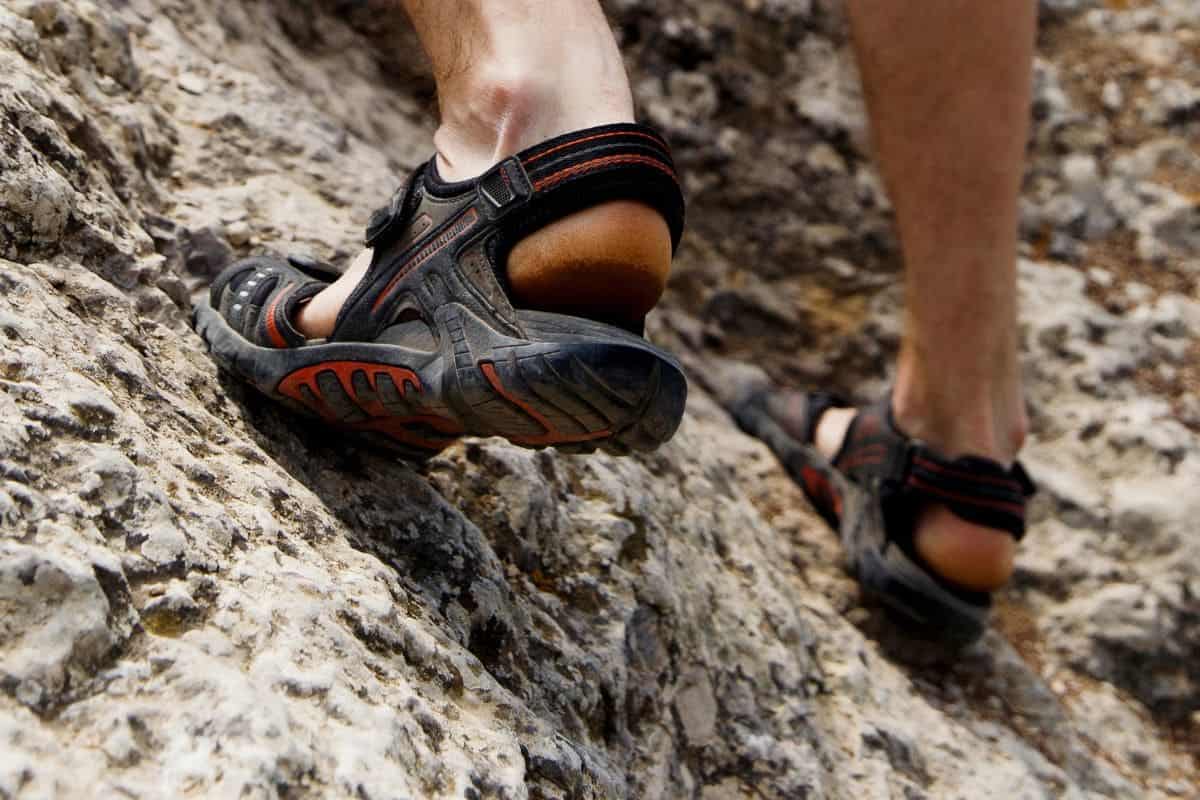
Elevation Changes
Expect significant elevation changes on many beginner backpacking trips in California.
For instance, the Trans-Catalina Trail can involve an elevation gain or loss of around 9,600 feet, so pace yourself and be ready for some climbing.
Here are some trails to look into:
- Bull Run and Heiser Lakes: You’ll ascend about 1,479 feet.
- Sword Lake, Carson-Iceberg Wilderness: Prepare for an elevation gain of approximately 1,070 feet.
Water Sources
You will find a few water sources such as streams and lakes. Water is “clean” for the most part but make sure to use your filter, tablets, or boil the water to kill any parasites.
For water availability, keep in mind these points:
- Always have a filtration system, as you’ll need to purify water from natural sources.
- Hydration should be a top priority, especially as you tackle elevation gains and exposed trails. Drink water, even if you’re not thirsty, to stay ahead of the water.
Dealing with Crowds
It’s popular here in California. The well-known trails will have a lot of people on them. Do avoid as many people as you can, and plan to hike early or on weekdays to avoid the busiest times. In addition, permits are required on many trails (e.g., Carson-Iceberg Wilderness), which can help manage the number of hikers.
Therefore, these trails cross public lands where you’ll share space with fellow nature enthusiasts. Your patience and preparedness will ensure you enjoy the beauty amidst the company of others.
Preparing for Multi-Day Hikes
Basecamp vs. Through-Hiking
Base camping means setting up a single camp and making trips from this point. It’s great for beginners because it allows them to become accustomed to backpacking without carrying all of their gear every day.
On the other hand, through-hiking involves moving to a different location each night.
Through-hiking is my preferred method, but either way is fine.
Choose through-hiking for a challenging but rewarding experience as you cover more ground and wake up to new alpine lakes and vistas daily.
Whichever style you pick, ensure the difficulty is appropriate for your skill level.
Planning Hiking Food and Water
- Pack calorie-dense and nutritious meals to sustain your energy. Plan each meal and consider using a table to organize:
| Day | Breakfast | Lunch | Snack | Dinner |
|---|---|---|---|---|
| 1 | Instant oatmeal | Trail mix | Energy bars | Pre-cooked dehydrated meal |
| 2 | Granola with powdered milk | PB&J tortilla roll-ups | Nuts and dried fruits | Pasta with pesto |
- Staying hydrated is crucial.
- Research water sources ahead of time and plan to carry or treat water accordingly.
- Against possible shortages, always carry a bit extra and pack a reliable water filtration system.
Backcountry Hygiene
- Always carry a small shovel or trowel to bury your waste at least 6-8 inches deep and at least 200 feet away from water sources, trails, and camp.
- Pack biodegradable soap and use it sparingly.
- For bathing or dishwashing, carry water 200 feet away from natural water bodies to minimize ecological impact. This is important, so don’t glance over it!
- Keep hand sanitizer accessible and use it before meals and after using the bathroom to prevent the spread of germs.
Seasonal Considerations
Spring Tips
In the high Sierra, snow often remains on trails into late June, making spring hikes chilly with potential snow travel. The melting snow, however, feeds spectacular waterfalls in spring, creating a perfect opportunity for waterproof gear and photography.
Summer Plans
Hydration is crucial, and you’ll likely need more water than you initially think. In places like the Sierra, streams can dry up, so it’s important to plan your water stops in advance.
If you’re planning to visit Desolation Wilderness, summer is the prime time, but permits are required. Make sure to secure yours well in advance to enjoy your trip without any hitches.
Autumn Season
As autumn arrives, weather patterns shift, particularly in areas like Mammoth Lakes, where conditions can change rapidly; dressing in layers is advisable for the cool mornings and warmer afternoons.
This season also sees fewer hikers, offering a peaceful experience amidst the changing leaves and crisp air.
Winter Season
During winter, the Desolation Wilderness lives up to its name, becoming desolate with snow-covered trails, necessitating proper gear for snowshoeing or skiing.
With shorter days and the potential for severe weather, extra warm clothing is essential, and checking weather reports becomes a crucial part of high-country trip planning.
Extending Your Range
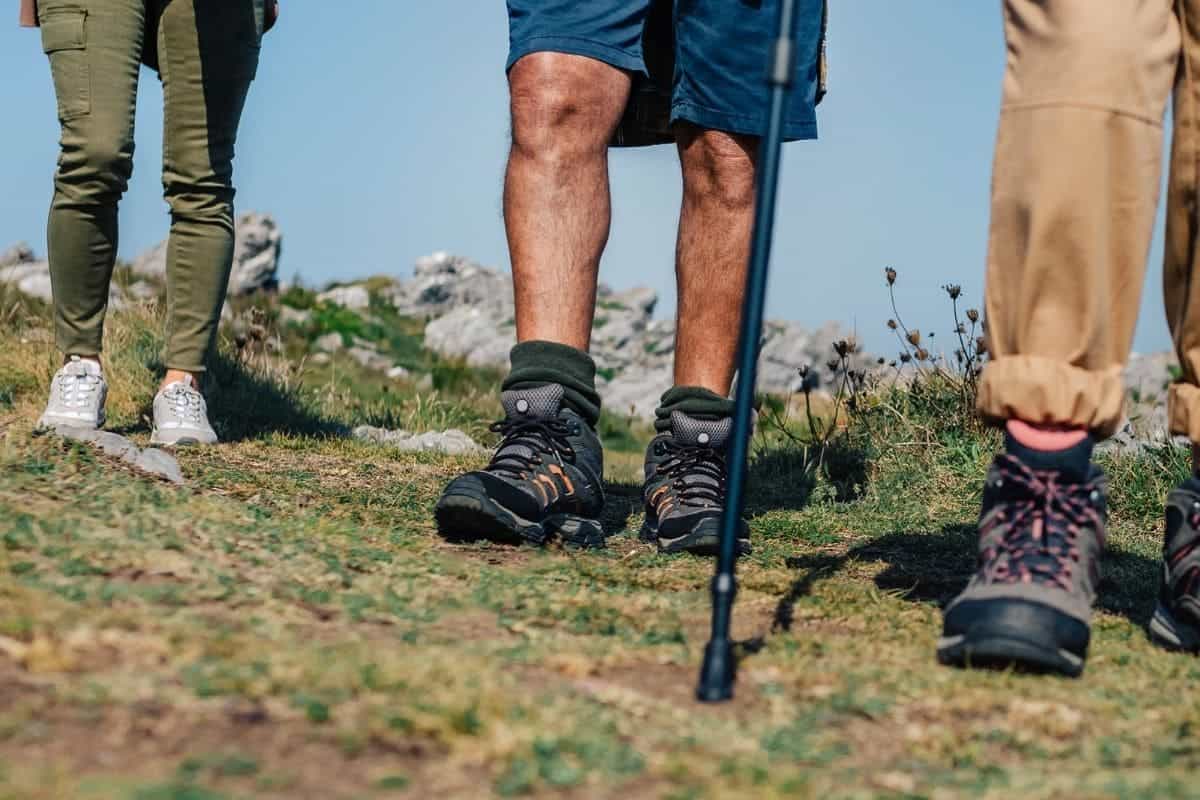
From Beginner to Intermediate Trails
As your confidence builds, you’ll want to find trails that offer a bit more challenge but won’t leave you overwhelmed. Look for trips with moderate elevation gains and longer distances that test your stamina.
For example, transitioning from a straightforward hike to one with a 2,500 to 3,500 feet elevation gain can be a good step up.
You’ll also want to master the art of steering the trails that aren’t as well-marked, requiring skills in map reading and compass use.
- Skill Building: Hone your navigation, camp setup, and weather preparedness.
- Distance: Gradually increase your mileage, aiming for hikes that are at least 7 to 10 miles.
- Elevation Gains: Look for hikes with moderate elevation gain, such as 2,500+ feet.
CoreM Pro-Tip: If you’re planning to hit some tougher trails, add a few things like trekking poles and shoes with better grip to help you handle the varied terrain. It’s all about staying safe and having a good time out there!
Challenging Yourself Safely
The goal is to stretch your limits, not snap them!
Always prioritize safety by informing someone of your plans and carrying a means of emergency communication, like a satellite messenger. I know what you’re thinking, “I’m not going to get a satellite phone.” I understand you think you’re not going to use it, and I hope you never will. But the one time you do makes the hassle of getting one worth it (end rant!)
You should also check your fitness levels before attempting more demanding backpacking trips.
Include training that mimics the trail conditions, such as stair climbing for elevation and weighted walks for endurance.
- Fitness Preparations: Work out to strengthen your core and legs. Include cardio for endurance.
- Safety Measures: Share your travel plans, carry a map, and invest in emergency gear.
- Conditioning: Practice with weighted packs on trails similar to your target trip.
Frequently Asked Questions
What Is a Good First-Time Backpacking Trail in the Sierras for Beginners?
In the Sierra Nevada, a popular choice for beginners is the Bull Run and Heiser Lakes trail. It spans about 8-9 miles with an elevation gain of 1,479 feet, offering manageable challenges and stunning scenery.
Can You Recommend Some Family-Friendly Backpacking Trips in California?
If you’re backpacking with the family, consider the Sword Lake trail in the Carson-Iceberg Wilderness. It’s an out-and-back route totaling 5.6 miles with a reasonable elevation gain of 1,070 feet, and it’s ideal for a short 2-day trip.
Where Are the Best Spots for Beginner Backpacking in Southern California?
Southern California offers the Trans-Catalina Trail, a picturesque route that spans 38.5 miles roundtrip across Catalina Island. With a total elevation gain/loss of 9,600 feet, it’s best tackled over 4-5 days, giving you plenty of time to enjoy the coastal views.
How Should I Prepare for an Overnight Backpacking Trip in Northern California?
When preparing for an overnight trip in Northern California, make sure to bring layered clothing for varying weather, a map and compass for navigation, and bear-proof containers for your food, as this is a bear country.
What Are the Top Beginner-Friendly Backpacking Routes in the Bay Area?
The Bay Area offers several beginner-friendly trails, such as those in the Point Reyes National Seashore. These trails offer diverse landscapes, and mild climates, and are well-maintained, making them a great choice for new backpackers.
What Do I Need To Know for Planning a 3-Day Backpacking Journey in California?
For a 3-day journey, pack light, but don’t skimp on essentials like water, food, shelter, and a first-aid kit. Research the area’s weather and terrain, plan your designated camping spots, and ensure you obtain any required permits.
Final Thoughts – Choose The California Trail As Your First Backpacking Destination
A backpacking trip in California as a beginner offers a unique opportunity to connect with nature and challenge oneself in a supportive environment.
With trails that cater to various fitness levels and scenic beauty at every turn, California is an ideal setting to begin your backpacking journey.
Ultimately, preparation is key, from selecting the right gear and understanding permit requirements to choosing trails that match your ability. As you grow in confidence and capability, the paths of California’s trails will lead you to more challenging adventures, encouraging a lifelong relationship with the great outdoors!

